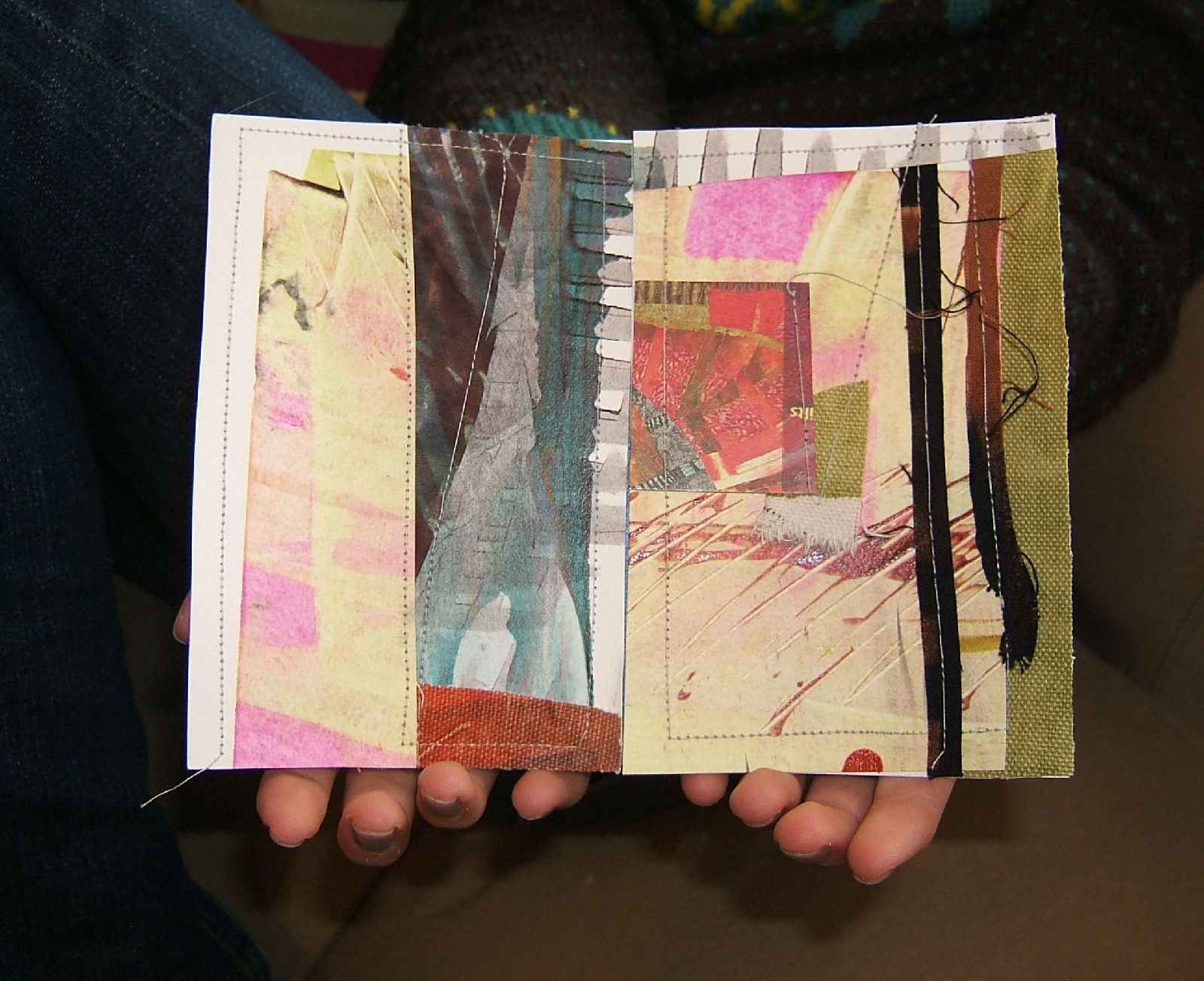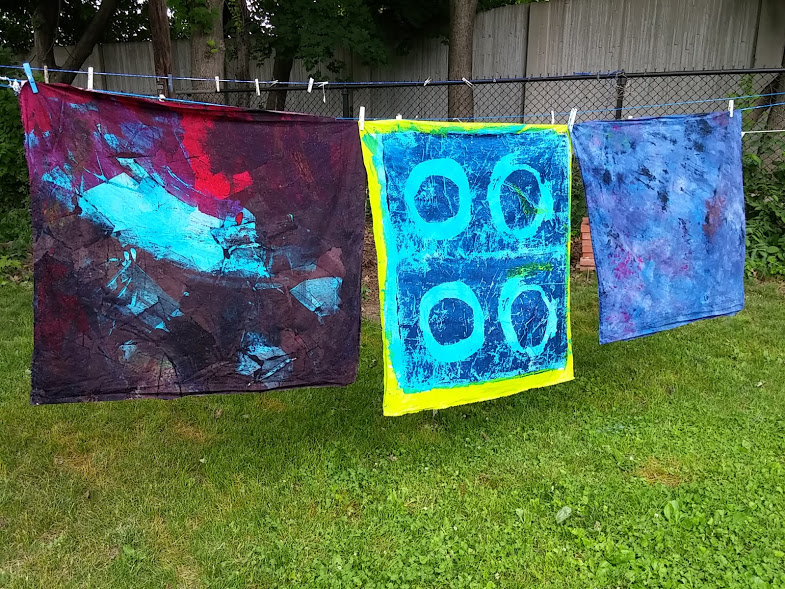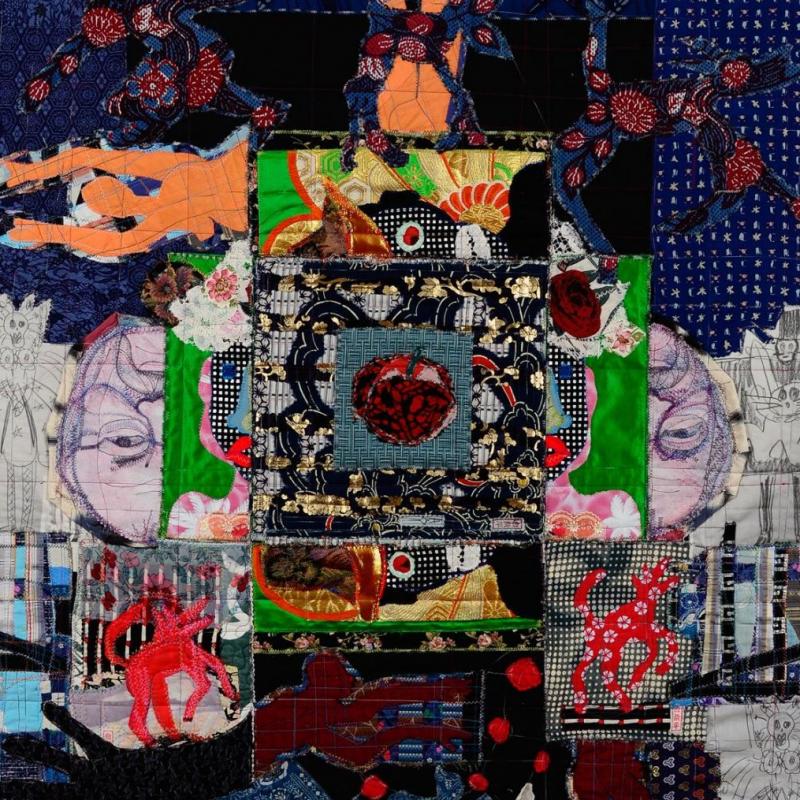You’ve printed, dyed, soaked, smashed, rolled, pinched, washed and ironed the thing. Now what do you do with it? Face it, if you have a great piece of fabric, either one you acquired or one you made, it’s hard to know just how and when to cut it up.
I know, as I make that one-of-a-kind fabric, and I use it. So, here are some ways to get that yardage off your shelf and on to your design wall.

Selecting fabrics to make a palette. This is the beginning of “Normandy.”
Get a design wall. Sounds basic, but if you are just arm’s length away from a piece of fabric, it might be difficult to see underlying patterns, dominant color, or how that surface design that was oh-so-delicate fades away at 10 feet. Seeing it spread out on a design wall will clue you to the scale of the fabric, and ultimately the size of the work where it best fits. In addition, use the design wall to add fabrics that will become your palette, making sure that the selections touch each other, leaving out spaces of white design wall. You will see the interaction of color, shape and scale.
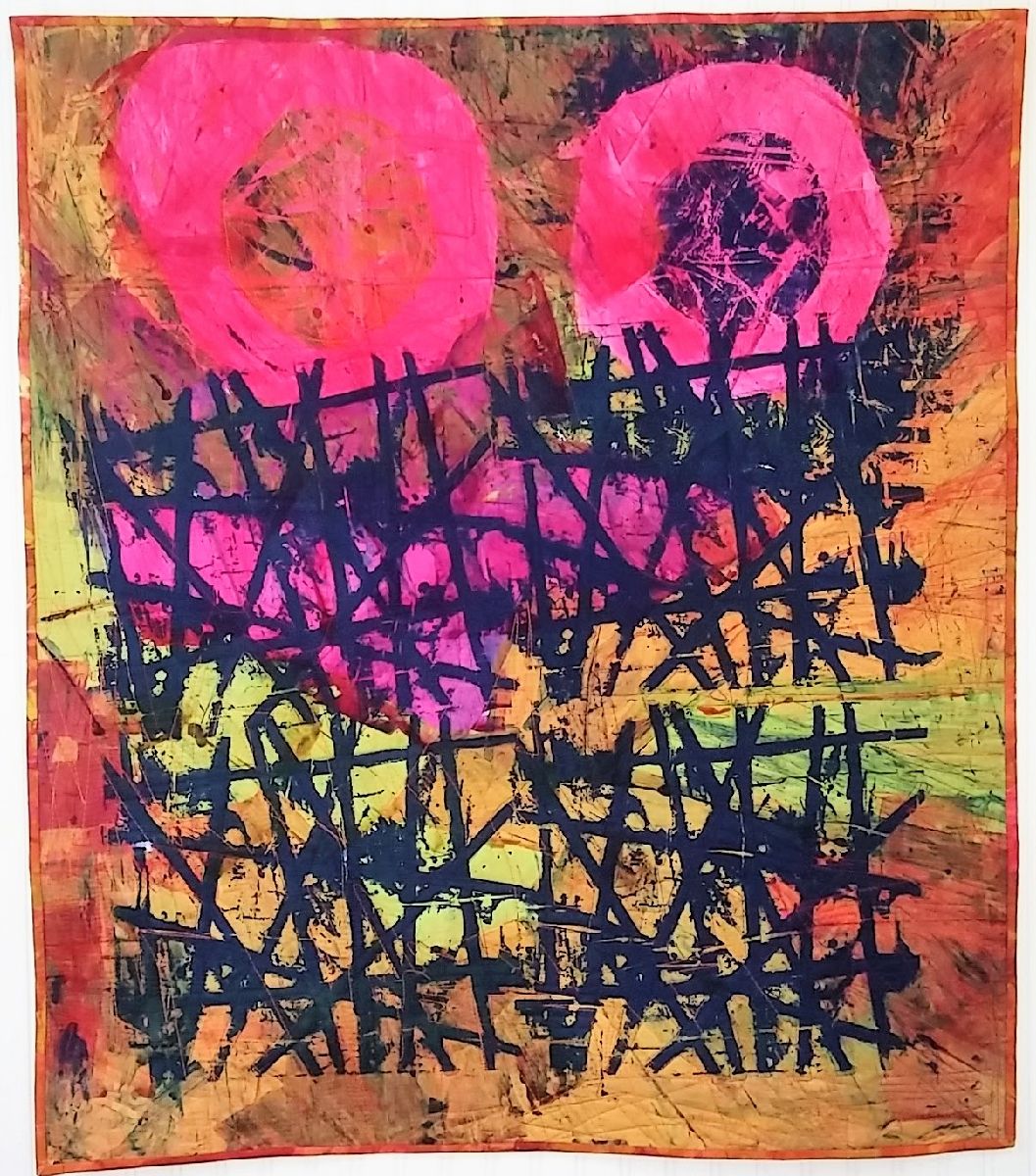
This whole cloth had graphics that were distinct and could hold the design without piecing.
Use it as a whole cloth. Use your fabric uncut, as one piece. If you’ve printed a piece, and the composition is strong, use it for its intrinsic value and quilt it as it is. Or, use it whole as the background or as a unifying whole to appliquéd or fused work. Let the whole cloth be the support.
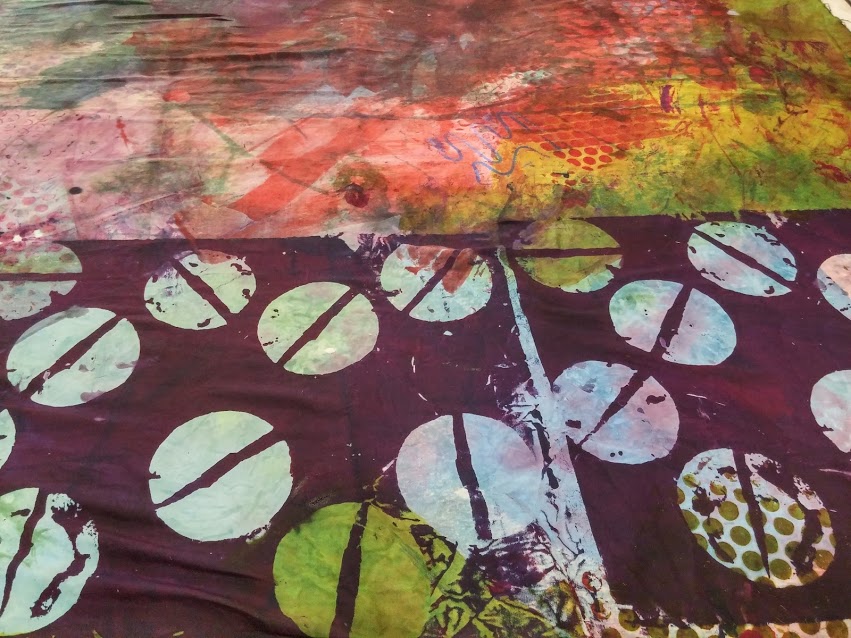
Pay attention to the scale. This fabric already has pattern in different scales, so take advantage of the ready-made separation, leave it connected.
Cut it up. But, be careful. Don’t cut it up into too many pieces. The value of the cloth may be in the print, the graphic elements, in the texture, or the beauty of the design so carefully chosen and applied. Each cut eats seam allowance as well, making the pieces even smaller.
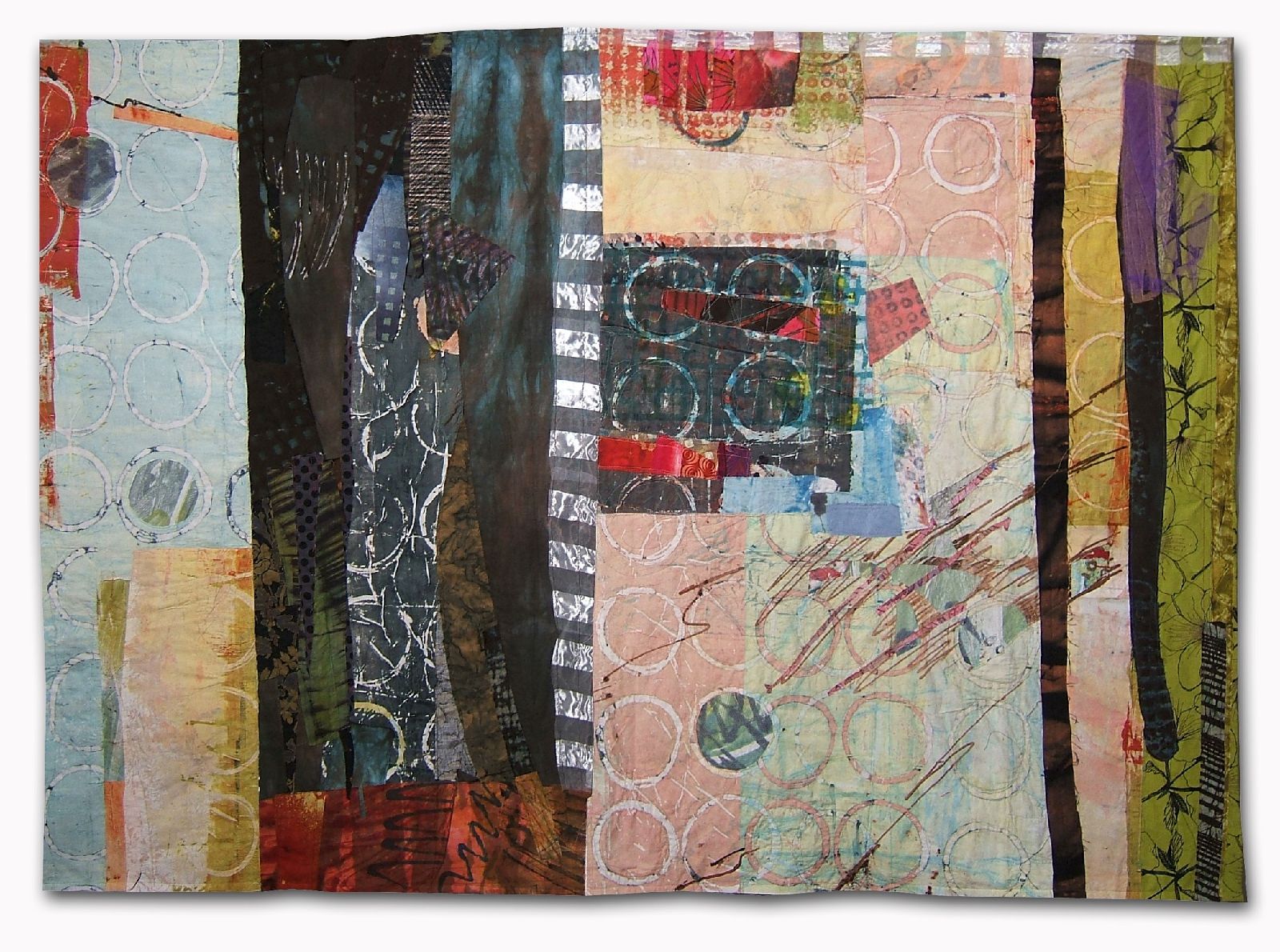
I drew a full-scale freezer paper pattern of this 3”x 5” sketch for a 3’ x 5’ work “Leap of Faith.”
Pick a place for that unique piece of fabric. I often use a design from a collage, a photograph, or an object as inspiration. Then I enlarge and make a full-scale drawing that later becomes the final work. I can know with my template if it will fit, how much, and what sections I need to use. I use freezer paper templates to transfer my drawings, or might work spontaneously, using a sketch as a guide.
Watch the edges of the fabric for a distinct line between colors. Think about not covering or printing to the entire edge of the cloth. Often, that edge is more dynamic than the overall pattern found in the body of the fabric. I’ll look for that shape’s edge or line, and have it continue with another’s edge to find shapes that flow from one fabric to another. If your fabric has a ground color that is used in both fabrics, it is easy to have an element transfer in shape from one to another piece.
I’ve got a stash, most of us do. But is has no value unless you use it. These are just some of the ways to look at that piece of fabric. Get decisive and put it to use!

Lisa makes use of the whole fabric in my class “Glorious Prints.”
ABOUT THE ARTIST
Pat Pauly is a full-time fiber artist. When not in her Rochester, New York studio, she can be found teaching and lecturing throughout North America on contemporary quiltmaking and surface design.

